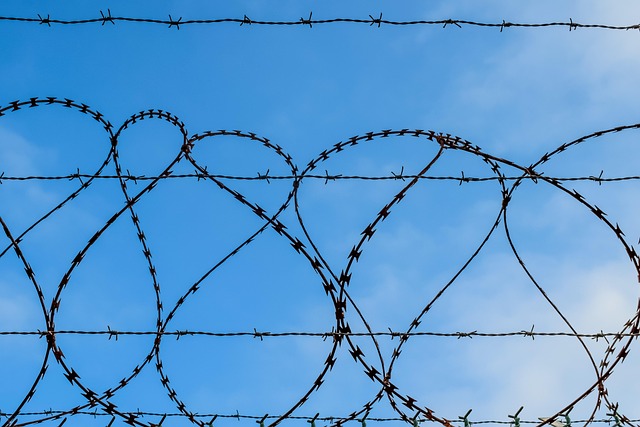Loopholes in DUI legislation create a complex challenge, enabling high-risk reoffenders to evade consequences through technicalities and vague laws. These loopholes, like lenient bail and inadequate monitoring, foster recidivism due to unaddressed mental health or substance abuse issues. To break the cycle, it's crucial to review and amend DUI laws, implementing stricter BAC limits, enhanced penalties for repeat offenders, and multi-faceted intervention programs focusing on education and support for underlying conditions.
In the ongoing quest to reduce recidivism, understanding high-risk reoffenders and their unique challenges is paramount. This article delves into the complex issue of identifying and addressing these individuals, focusing on a key area of concern: loopholes in DUI legislation. By examining current laws and their impact, we uncover gaps that contribute to high reoffending rates. We then explore strategic solutions and highlight inspiring success stories, demonstrating the potential to break the cycle and foster positive change.
- Understanding High-Risk Reoffenders: A Complex Issue
- Loopholes in DUI Legislation: Uncovering the Challenges
- Impact of Current Laws on Recidivism Rates
- Strategies to Address and Close Legal Gaps
- Success Stories: Breaking the Cycle of Reoffending
Understanding High-Risk Reoffenders: A Complex Issue

Identifying high-risk reoffenders is a multifaceted challenge, especially when it comes to understanding the unique dynamics of their behavior and motivations. In many cases, these individuals fall through the cracks due to loopholes in DUI legislation, which can fail to adequately address their complex needs. This often results in a repeating cycle of offense and arrest, highlighting a critical gap in our criminal justice system’s approach.
The issue is further compounded by the fact that high-risk reoffenders may not fit traditional stereotypes, making it difficult for authorities to predict or intervene effectively. They could be individuals with a history of substance abuse, mental health issues, or trauma, which often go untreated due to insufficient resources or inaccessible support systems. As a result, these individuals might reoffend, driven by desperation or lack of alternative coping mechanisms, perpetuating the cycle of incarceration and recurrence.
Loopholes in DUI Legislation: Uncovering the Challenges

The current legislation surrounding DUI (Drunk Driving) often presents seemingly innocent loopholes that, despite good intentions, fail to deter high-risk reoffenders. One significant issue lies in the varying interpretations and enforcement of blood alcohol content (BAC) limits across jurisdictions. While the general understanding is that a BAC over 0.08% indicates impairment, some legal systems use different thresholds for different types of offenses or circumstances, creating confusion and potential opportunities for abuse.
Additionally, technicalities in procedure can lead to delays and reduced charges, allowing offenders to avoid severe consequences. For instance, the time between arrest and blood testing is crucial; loopholes may exist that permit questionable time frames, leading to admissibility debates. These complexities necessitate a comprehensive review of DUI legislation to ensure consistent and effective enforcement, targeting reoffenders who pose significant risks to public safety.
Impact of Current Laws on Recidivism Rates

The current legal framework, while well-intentioned, often fails to break the cycle of recidivism due to various loopholes and inconsistencies, particularly in DUI (Driving Under the Influence) legislation. Many high-risk offenders slip through the cracks due to technicalities or lenient sentences, exacerbating the problem of repeated offenses. The existing laws, in some cases, act as a mere speed bump rather than a significant barrier, allowing individuals with a history of drunk driving to reoffend without severe consequences.
These loopholes can range from lenient bail conditions to inadequate monitoring programs and even vague definitions of repeat offenses. As a result, recidivism rates remain alarmingly high, putting public safety at risk. Addressing these issues requires a comprehensive review of the legislation to ensure that the legal system effectively discourages reoffending and fosters a culture of accountability among high-risk offenders.
Strategies to Address and Close Legal Gaps

Addressing loopholes in DUI (Driving Under the Influence) legislation is a critical strategy to break the cycle of reoffending among high-risk individuals. Many legal gaps in current DUI laws create opportunities for offenders to avoid severe consequences, potentially leading to continued dangerous behavior. For instance, certain judicial interpretations or lenient sentencing guidelines might result in reduced charges or light penalties, failing to deter future offenses.
Closing these gaps requires a multifaceted approach. Legislation can be amended to tighten restrictions on blood alcohol levels and enhance penalties for repeat offenders. Additionally, implementing mandatory and more stringent intervention programs, such as extended counseling and community service, can help address the root causes of DUI reoffending. Effective communication and education campaigns can also play a role by raising awareness about the consequences and promoting responsible drinking habits.
Success Stories: Breaking the Cycle of Reoffending

In the battle against recurring DUI offenses, there are success stories that highlight innovative strategies and programs breaking the cycle of reoffending. These narratives demonstrate that change is achievable, offering hope for both offenders and communities at large. One such example involves community-based interventions where high-risk individuals are actively engaged in support groups and rehabilitation programs, fostering a sense of accountability and personal growth. By addressing underlying issues like substance abuse or mental health problems, these initiatives provide individuals with the tools to turn their lives around.
Moreover, successful reintegration often includes leveraging technology to close loopholes in DUI legislation. Advanced monitoring systems enable authorities to track high-risk offenders’ behavior, ensuring compliance with legal requirements and providing timely interventions when necessary. This multi-faceted approach not only reduces recidivism rates but also saves resources by preventing future arrests and incarceration, ultimately leading to safer communities.
High-risk reoffenders pose a significant challenge, but by addressing loopholes in DUI legislation and implementing effective strategies, we can break the cycle of recidivism. Success stories demonstrate that with tailored interventions and support, individuals can turn their lives around. It’s crucial to continue navigating these complex issues and closing legal gaps to ensure safer communities for all.






